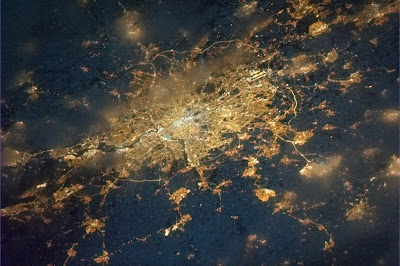According to the World Meteorological Organisation’s (WMO) annual greenhouse gas bulletin, published this month, the levels of gases in the atmosphere that are driving climate change increased to a record high in 2012.
Atmospheric carbon dioxide (CO2) grew more rapidly in the year than its average rise over the past decade - and concentrations of methane and nitrous oxide also broke previous records.
The WMO has produced an annual greenhouse gas bulletin for the past nine years and says the warming effect on our climate as a result of carbon dioxide and other gases has increased by almost a third since 1990.
Carbon dioxide is the most important of the gases WMO tracks but only about half of the CO2 that is emitted by human activities remains in the atmosphere, with the rest being absorbed by the plants, trees, the land and the oceans.
Since the start of the industrial era in 1750,global average levels of atmospheric CO2 have increased by 141 percent.
"The observations highlight yet again how heat-trapping gases from human activities have upset the natural balance of our atmosphere and are a major contribution to climate change," said WMO Secretary-General Michel Jarraud.
"It is a worry - the more we delay action the bigger the risk we cannot stay under the 2C limit that countries have agreed," he added.
While the daily measurement of carbon dioxide in the atmosphere exceeded the symbolic 400ppm mark in May this year, the global annual average CO2 concentration will cross this point in 2015 or 2016, says the WMO.
Levels of methane also reached record highs in 2012 maintaining an upward trend since 2007 which has followed a period when they appeared to be levelling off.
Recent research indicates that the rate of increase in emissions might be slowing down - but even so the gases can continue to concentrate in the atmosphere and exert a climate influence for hundreds if not thousands of years.
Scientists suggest that the new data indicates that, after a slowdown in the rate of temperature increases over the past 14 years, global warming is returning with a vengeance.
"For the past decade or so the oceans have been sucking up this extra heat, meaning that surface temperatures have only increased slowly," said Prof Piers Forster of Leeds University.
"Don't expect this state of affairs to continue though - the extra heat will eventually come out and bite us, so there will be strong warming over the coming decades."
Should we be surprised? Not really. In September the UN's climate science panel, the IPCC, said that atmospheric CO2 concentrations were at levels ‘unprecedented in at least the last 800,000 years’.
The last time so much greenhouse gas was in the air was several million years ago, when the Arctic was ice-free, savannah spread across the Sahara desert and sea levels were up to 40 metres higher than today.
But, as the WMO points out, the amount of CO2 in the atmosphere is only half of the picture as much of the CO2 is being absorbed by the oceans.
Annual worldwide emissions from power plants, cars and other human activities are currently several billion tonnes too high to keep global temperature rises below 2C and show no sign of stopping.
Other figures released recently by NOAA’s National Climatic Data Center under its ‘State of the Climate: Global Analysis for September 2013' show the combined average temperature over global land and ocean surfaces for September 2013 tied with 2003 as the fourth highest for September on record - at 0.64C above the 20th century average of 15.0C.
The global land surface temperature was 0.89C above the 20th century average of 12.0C, marking the sixth warmest September on record.
For the ocean, the September global sea surface temperature was 0.54C above the 20th Century average of 16.2C, tying with 2006 as the fourth highest for September on record.
The combined global land and ocean average surface temperature for January to September was 0.6C above the 20th century average of 14.1C, tying with 2003 as the sixth warmest such period on record.







